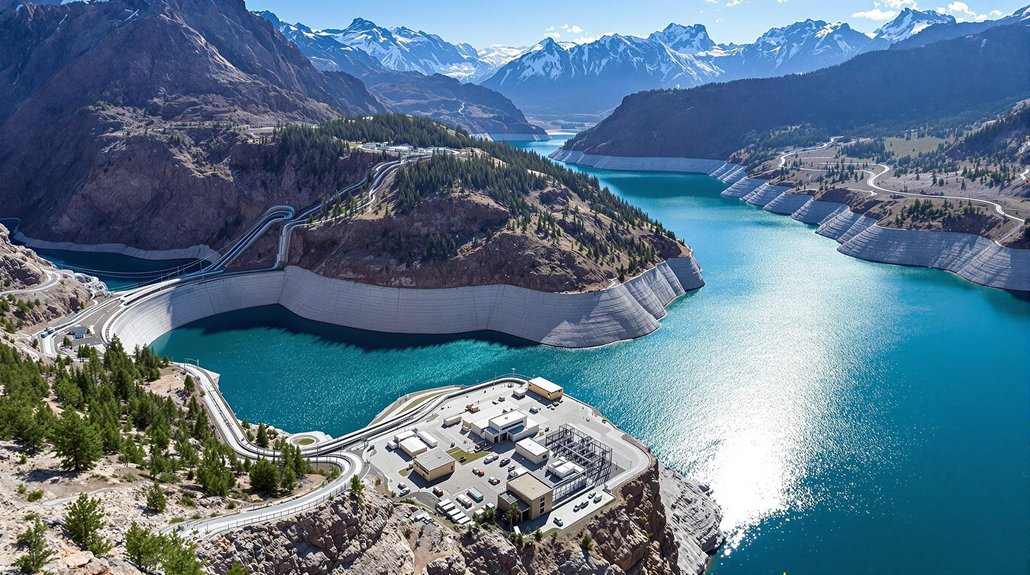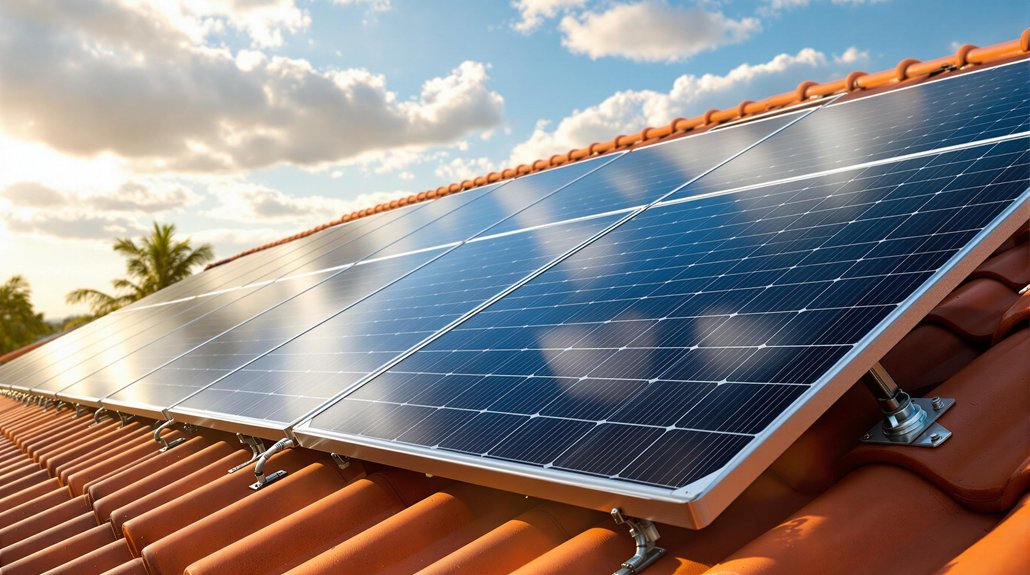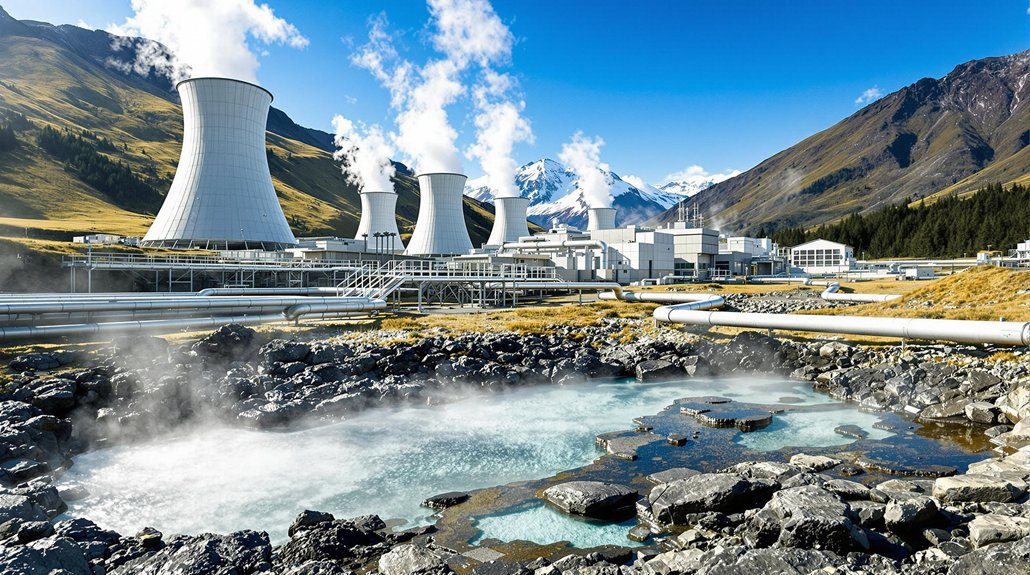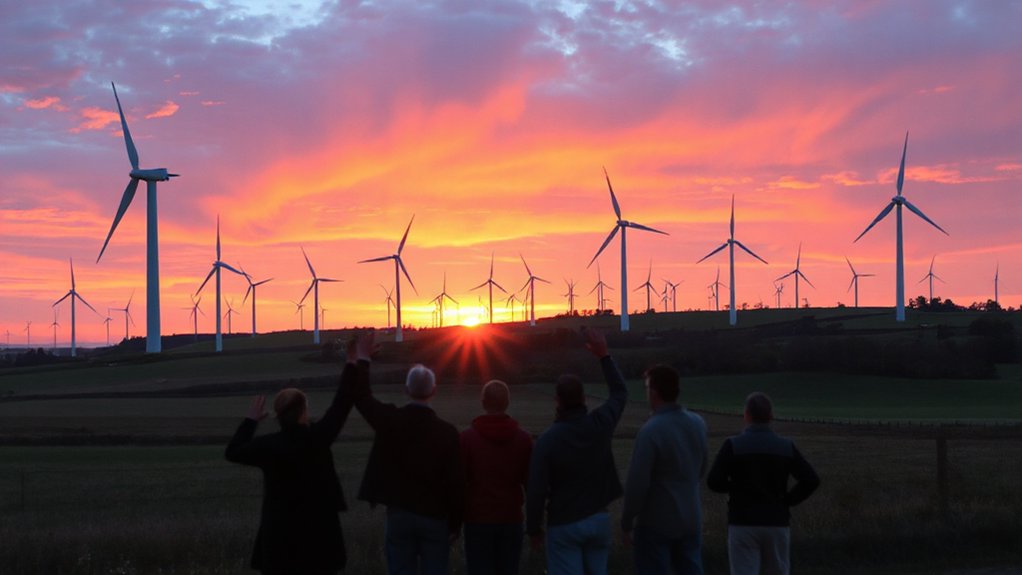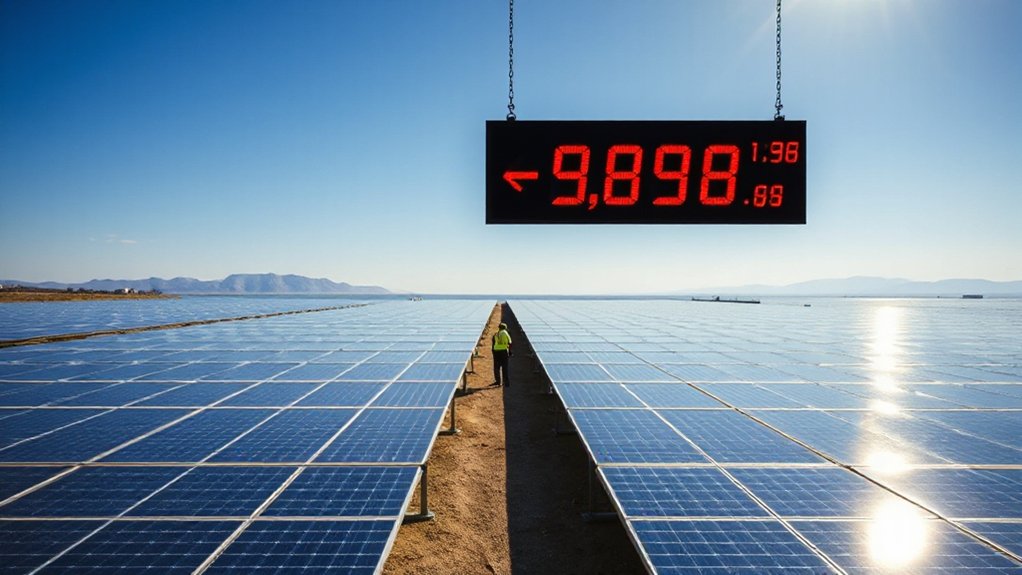Pumped hydro storage is brilliantly simple: two reservoirs at different heights connected by pipes. Water gets pumped uphill when electricity is cheap, then flows down through turbines to generate power when needed. The process is 70-80% efficient and can power hundreds of thousands of homes. It’s basically a giant water battery that works with gravity – no fancy chemistry required. The real magic happens when you see these massive systems in action.
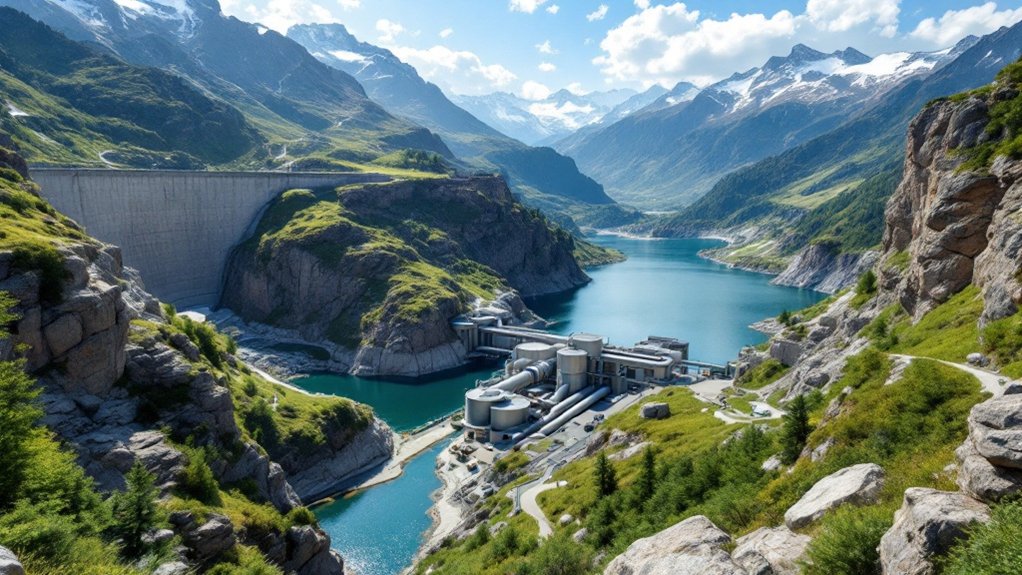
While modern civilization grapples with storing renewable energy, one of the oldest solutions remains the most effective: pumped hydro storage. It’s almost laughably simple – two reservoirs at different heights, connected by pipes. Yet this basic setup accounts for a whopping 95% of the world’s grid-scale energy storage. Not bad for glorified water tanks.
The process is straightforward. During off-peak hours when electricity is cheap and plentiful, water gets pumped from a lower reservoir to an upper one. Think of it as stuffing potential energy into a giant water battery. When peak demand hits and electricity prices soar, that stored water is released. Gravity does what it does best – it pulls the water down through turbines, spinning generators and creating electricity. The whole cycle then repeats. Modern systems utilize reversible Francis turbines that can both pump water up and generate power on the way down.
Pumped hydro storage is nature’s battery – moving water up when power is cheap, letting gravity create electricity when needed.
The numbers are impressive. These facilities can reach full power in minutes, store hundreds of megawatt-hours of energy, and keep the lights on for 6-20 hours straight. Individual plants can exceed 1000 megawatts of capacity. With the UK targeting around 30 GW of capacity in the next few decades, these systems are clearly here to stay. The round-trip efficiency isn’t perfect – you lose 20-30% of the energy in the process – but it’s still one of the most efficient large-scale storage options available.
What makes pumped hydro particularly valuable is its flexibility. It helps balance the grid‘s mood swings, smoothing out the ups and downs of electricity supply and demand. It’s especially useful for managing renewable energy sources like wind and solar, which tend to be as reliable as a weather forecast. When the wind stops blowing or clouds roll in, pumped hydro picks up the slack.
The environmental impact is relatively modest, particularly for closed-loop systems that don’t connect to natural water bodies. These facilities consume minimal water and produce practically no greenhouse gases during operation.
Sure, construction can disrupt local habitats, but with a lifespan of 50-100 years, these plants provide long-term benefits. In the grand scheme of energy storage solutions, pumped hydro remains the undisputed heavyweight champion.
